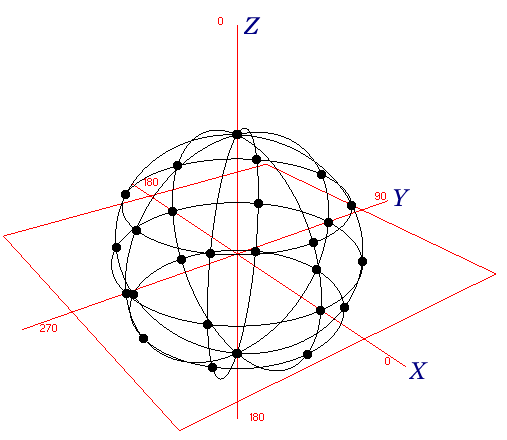A weblight (web) is a 3D representation of the light intensity distribution of a light source. Weblights can be used to represent anisotropic (non-uniform) light distributions derived from data provided by manufacturers of real-world lights. This gives a far more precise representation of the rendered light than either a spotlight or point light is capable of.
This directional light distribution information is stored in a photometric data file in the IES format using the IES LM-63-1991 standard file format for photometric data.
To describe the directional distribution of the light emitted by a source, the source is approximated by a point light placed at its photometric center. With this approximation, the distribution is characterized as a function of the outgoing direction only. The luminous intensity of the source for a predetermined set of horizontal and vertical angles is provided, and the system can compute the luminous intensity along an arbitrary direction by interpolation.
Goniometric Diagrams
Photometric data is often depicted using a goniometric diagram.

Goniometric diagram of a web distribution
This type of diagram visually represents how the luminous intensity of a source varies with the vertical angle. However, the horizontal angle is fixed and, unless the distribution is axially symmetric, more than one goniometric diagram may be needed to describe the complete distribution.
Photometric Webs
The photometric web is a three dimensional representation of the light distribution. It extends the goniometric diagram to three dimensions, so that the dependencies of the luminous intensity on both the vertical and horizontal angles can be examined simultaneously. The center of the photometric web represents the center of the light object.
The luminous intensity in any given direction is proportional to the distance between this web and the photometric center, measured along a line leaving the center in the specified direction.

Example of Isotropic distribution
A sphere centered around the origin is a representation of an isotropic distribution. All the points in the diagram are equidistant from the center and therefore light is emitted equally in all directions.

Example of Ellipsoidal distribution
In this example, the points in the negative Z direction are the same distance from the origin as the corresponding points in the positive Z direction, so the same amount of light shines upward and downward. No point has a very large X or Y component, either positive or negative, so less light is cast laterally from the light source.